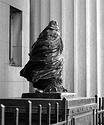Marco B
Subscriber
Hi all,
Just like others, I have at times struggled with drying marks on my film. While using wetting agent, and shortly dipping the film in demineralized water, still sometimes drying marks were left behind.
Now I have recently decided to leave out the wetting agent altogether and just do a last but prolonged soak of the developed film in demineralized water (10-15 minutes).
The films comes out very clean after drying, even when droplets were present when hanging them for drying. It seems to go better than before.
Are there any other people simply using a prolonged soak in demineralized water as the last bath for developed film? What are your experiences? Any possible cons to this approach?
Marco
Just like others, I have at times struggled with drying marks on my film. While using wetting agent, and shortly dipping the film in demineralized water, still sometimes drying marks were left behind.
Now I have recently decided to leave out the wetting agent altogether and just do a last but prolonged soak of the developed film in demineralized water (10-15 minutes).
The films comes out very clean after drying, even when droplets were present when hanging them for drying. It seems to go better than before.
Are there any other people simply using a prolonged soak in demineralized water as the last bath for developed film? What are your experiences? Any possible cons to this approach?
Marco
Last edited by a moderator:





